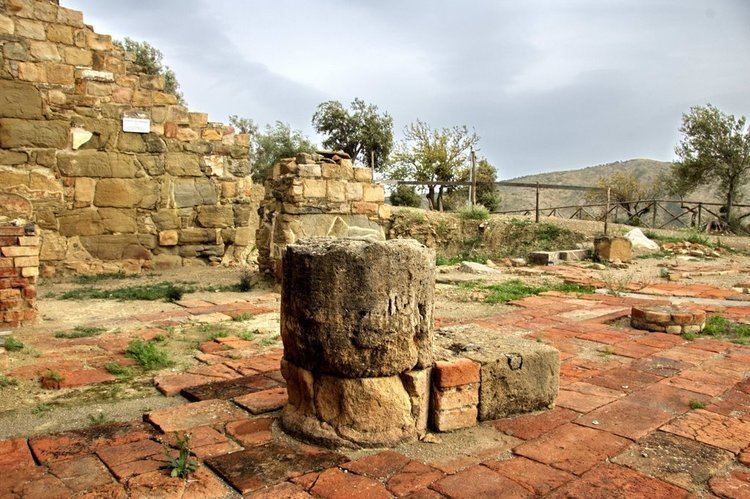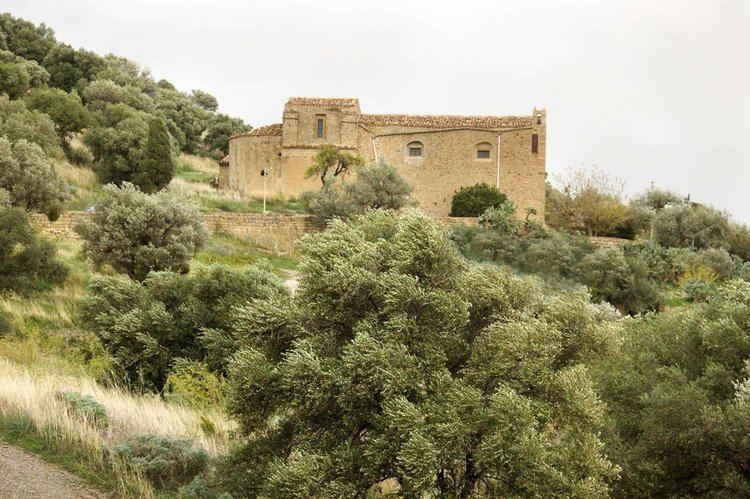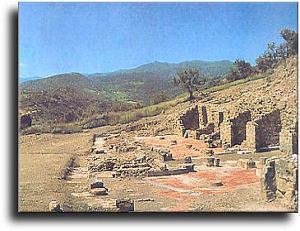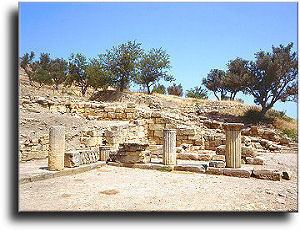Type Settlement Local time Wednesday 1:16 AM | ||
 | ||
Weather 4°C, Wind S at 6 km/h, 78% Humidity | ||
Halaesa was an ancient city of Sicily, situated near the north coast of the island, between Cephaloedium (modern Cefalù) and Calacte (modern Caronia).
Contents

History

The city was of Siculian origin, and its foundation is related by Diodorus, who informs us that in 403 BCE the inhabitants of Herbita (a Siculian city), having concluded peace with Dionysius I of Syracuse, their ruler or chief magistrate Archonides determined to quit the city and found a new colony, which he settled partly with citizens of Herbita, and partly with mercenaries and other strangers who collected around him through enmity towards Dionysius. He gave to this new colony the name of Halaesa, to which the epithet Archonidea was frequently added for the purpose of distinction. Others attributed the foundation of the city, but erroneously, to the Carthaginians. It quickly rose to prosperity by maritime commerce: and at the commencement of the First Punic War was one of the first of the Sicilian cities to make its submission to the Romans, to whose alliance it continued steadily faithful. It was doubtless to its conduct in this respect, and to the services that it was able to render to the Romans during their wars in Sicily, that it was indebted for the peculiar privilege of retaining its own laws and independence, exempt from all taxation: an advantage enjoyed by only five cities of Sicily. In consequence of this advantageous position it rose rapidly in wealth and prosperity, and became one of the most flourishing cities of Sicily. On one occasion its citizens, having been involved in disputes among themselves concerning the choice of the senate, C. Claudius Pulcher was sent, at their own request in 95 BCE, to regulate the matter by a law, which he did to the satisfaction of all parties. But their privileges did not protect them from the exactions of Verres, who imposed on them an enormous contribution both in corn and money. The city appears to have subsequently declined, and had sunk in the time of Augustus to the condition of an ordinary municipal town: but was still one of the few places on the north coast of Sicily which Strabo deemed worthy of mention. Pliny also enumerates it among the stipendiariae civitates of Sicily. Halaesa is the only place in Sicily where an inscription to a Roman governor of the republican period (perhaps in 93 BC) has come to light.
The site
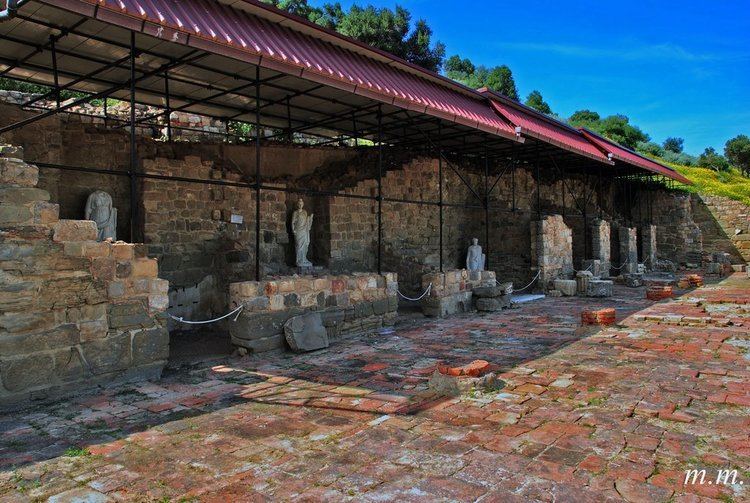
Great difference of opinion has existed with regard to the site of Halaesa, arising principally from the discrepancy in the distances assigned by Strabo, the Antonine Itinerary, and the Tabula Peutingeriana. Some of these are undoubtedly corrupt or erroneous, but on the whole there can be no doubt that its situation is correctly fixed by Cluverius and Torremuzza at the spot marked by an old church called Santa Maria le Palate, near the modern town of Tusa, and above the river Pettineo. This site coincides perfectly with the expression of Diodorus, that the town was built on a hill about 8 stadia from the sea: as well as with the distance of eighteen M. P. from Cephaloedium assigned by the Tabula. (The Itinerary gives 28 by an easy error.) The ruins described by Fazello as visible there in his time were such as to indicate the site of a large city, and several inscriptions have been found on the spot, some of them referring distinctly to Halaesa. One of these, which is of considerable length and importance, gives numerous local details concerning the divisions of land, etc., and mentions repeatedly a river "Halaesus", evidently the same with the "Halesus" of Columella, and which is probably the modern Tusa River (also called the Pettineo); as well as a fountain named "Ipybrha". This is perhaps the same spoken of by Solinus and Priscian (Perieges. 500), but without mentioning its name, as existing in the territory of Halaesa, the waters of which were supposedly agitated by the sound of music. Fazello describes the ruins as extending from the sea-shore, on which were the remains of a large building (probably baths), for the space of more than 1.5 km to the summit of a hill, on which were the remains of the citadel. About 5 km further inland was a large fountain (probably the Ipyrrha of the inscription), with extensive remains of the aqueduct that conveyed its waters to the city. All trace of these ruins has now disappeared, except some portions of the aqueduct: but fragments of statues, as well as coins and inscriptions, have been frequently discovered on the spot.
Coinage
"Halaisa Archonida" can be found on a Roman coin of the time of Augustus.

